1.
In Two Days, One Night, Jean Pierre and Luc Dardenne’s 2014 installment of their series of portrayals of contemporary psychosocial landscapes of precarity, the protagonist, a woman named Sandra (Marion Cotillard), is coming out of a period of clinical depression and is now faced with redundancy. Struggling to return to her job at a small solar panel factory, Sandra roams—by car, by bus, and by foot, often hesitantly, always tired—the urban and exurban spaces in and around Seraing in French-speaking Wallonia. She is seeking support for her cause from her coworkers, who are ashamed for taking a small bonus at the cost of Sandra’s unemployment, but who have a hard time turning their bad conscience into solidarity with the woman.
The “days” of the film’s title are bathed in relentless sunlight. A hot Belgian summer turns Sandra’s quest into a physical challenge, into an act of enduring heat and light. Occasionally she escapes the sunshine by lying down in bed, surrendering to the pull of her depression, protected by curtains that filter the glaring light. The extreme weather conditions figure as the cruel irony of the crisis haunting parts of the European solar industry, a crisis which of course is not limited to a single economic sector, however much it affects the production of photovoltaic cells in particular (and with great symbolic-symptomatic force).


Not too long ago, solar technology was considered to be part of the (green) future and was therefore entitled to be forever green-lighted for subsidies. Since then, the solar industry has come under the immense pressure of global (especially Chinese) competition, leading to a slump in solar module prices as expansion in production capacity has outpaced growth, ironically causing the bankruptcy in 2013 of Suntech Power Holdings Co., China’s biggest manufacturer of solar panels. “Solwal,” as the film’s factory is called—confounding the cosmic (sun) and the regional (Wallonia)—is the sad and saddening focus of Sandra’s attention, although it is almost entirely absent from the camera’s eye, stowed away in an indistinct industrial park. The factory is supposed to provide the protagonist with work, as well as with a social environment of mutual support and the money to live life like everybody else. But it fails utterly to deliver any of these essentials.
The Dardenne brothers’ “Solwal” is as far away from the sun as one can imagine. Other than the narrative and allegorical function of this place that refers to the neoliberal destruction of organized labor and the prosaic financialization of sunlight, this bleakness may bear a relation to specific structural inequalities. Compared with Belgium’s Flemish Region, for instance, Wallonia lags far behind in solar energy matters. It accounts for only about 12 percent of the country’s photovoltaic capacity, whereas the Flemish Region accounts for the other 88 percent. Although solar power in Belgium grew significantly from 2009 to 2012, expecting to reach “grid parity” in 2016, it is reported to have since declined. Deeply affected by the changing supply/demand ratio of photovoltaic technology, by national and transnational energy policies, and by the global competition in labor, knowledge, and raw materials, Sandra is an emblematic figure of the intersection of a plurality of crises and transformations. Using her as a highly vulnerable guide, Two Days, One Night envisages both the precariousness inflicted by the neoliberal economy and climate change, and a world in which a Western Europe once prosperous thanks to heavy fossil industry (coal, iron) now resembles a suburbanized sunbelt landscape, with a population moved and shaken by planetary forces. Though the film ends on a somewhat questionable note, calmly celebrating the resilience of its main character (the full-on experience of her powerlessness and dependency on others ultimately helps her overcome her depression), it provides considerable arguments, persuasive images, and other sensory evidence for the necessity of conceiving our contemporary condition in multiple, interrelated terms, of looking for the connections and causalities that can sustain a discourse on politics, economy, and affectivity under the sun.
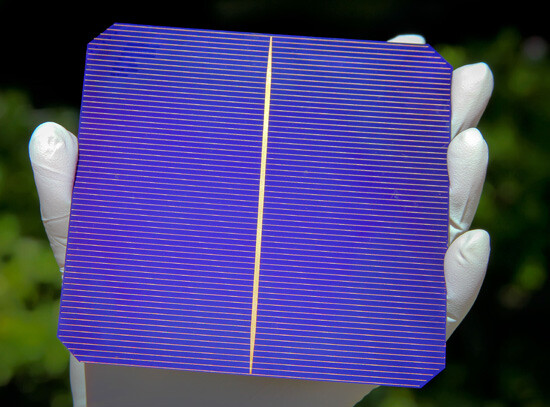

2.
Although Two Days, One Night doesn’t speak directly to issues such as solar energy, the political economy of sunlight, and the relations between psychic states and exposure to sunshine, these issues are latently at stake throughout. How much sun is needed to maintain or improve psychic and physical health? What are the repercussions on local labor politics of ripples in global energy markets? To what extent is the distribution of wealth related to the distribution of light? Questions of this order are placed in the folds of the narrative and the imagery of the film, and they haunt the western-style tale of the heroine searching among her coworkers and within herself for a reason to stay alive in the desert of the solar-industrial real.
For us earth-dwellers, the recent history of the sun is marked by concerns about energy supply and human health, the former intimately linked with the period when awareness of postcolonial interdependency in matters of fossil fuel supply became inevitable with the oil crises of 1973 and 1979. (The second of these crises caused the Iranian Revolution, which was preceded, in November 1978, by a strike of 37,000 workers in Iran’s nationalized oil industry. This strike initially reduced production from six million barrels per day to about 1.5 million barrels.) On June 20, 1979, a remarkable photo op was scheduled on the rooftop of the White House. “No one can ever embargo the Sun or interrupt its delivery to us,” US president Jimmy Carter told the press, standing in front of an array of solar panels. He continued:
A generation from now, this solar heater can either be a curiosity, a museum piece, an example of a road not taken, or it can be a small part of one of the greatest and most exciting adventures ever undertaken by the American people: harnessing the power of the Sun to enrich our lives as we move away from our crippling dependence on foreign oil.1
Constructing a lineage of energy-and-light-savvy rulers, Carter compared himself to president Benjamin Harrison, who in 1891 had electric lighting installed in the White House. Carter announced plans for a “solar energy bank” with the goal—wildly ambitious even by today’s standards—of generating 20 percent of US power from alternative energy sources by 2000. (In 2010, solar, thermal, and photovoltaic technology provided less than 0.1 percent of US energy.)
As is well known, soon after this press conference Carter fell victim to the disaster of the Iran hostage crisis of 1979–80. And of course, he was not the neoliberal game changer desired by big business. His successor, Ronald Reagan, slashed the US Department of Energy’s research and development budget for renewable energy, and halted tax subsidies for the deployment of wind turbines and solar technologies, stating that “the energy crisis that had affected both foreign and domestic policy during Carter’s term would not be a factor during his own.”2 The title of Joseph Beuys’s 1982 song “Sonne statt Reagan” (“Sun Instead of Rain”), while focusing on the Cold War nuclear arms race rather than Reagan’s anti-solar energy politics, nonetheless poignantly commented on the opposition between neoliberalism and the democratic solar economy,3 if not “solar communism.”4


In 1986, Reagan had Carter’s solar panels dismantled and tossed in a government storehouse in Virginia. Greenpeace requested the panels to use them at a homeless shelter, but they were ultimately installed at Unity College in Maine (“America’s Environmental College”) in 1991, where they generated hot water at the student cafeteria. They were eventually taken out of operation in 2005 but remained on the cafeteria’s roof until 2010.5
Around this time, Swiss artists and filmmakers Christina Hemauer and Roman Keller, who had discovered the story of Carter’s solar panels four years earlier, released their sixty-six minute documentary A Road Not Taken:The Story of the Jimmy Carter White House Solar Installation. (This film followed No. 1 Sun Engine, their multistage contribution to the 2008 Cairo Biennial. No. 1 Sun Engine was dedicated to an episode in the early history of the commercial use of solar energy: American engineer and inventor Frank Shuman’s 1913 solar power generator in Maadi, near Cairo.6) But things have undoubtedly changed since Reagan took power and the neoliberal revolution in the US and elsewhere radically expanded the deployment of fossil fuel energy. In 2013, after years of lobbying by various environmental actors, President Obama again installed solar panels on the White House, though apparently rather reluctantly and without sending any programmatic message comparable to Jimmy Carter’s.7
With regard to the potential of renewable energy—and solar energy in particular—to displace or even replace fossil fuel and nuclear energy, the narrative obviously depends on who is telling the story. Reading Daniel M. Berman and John T. O’Connor’s still invaluable 1996 study Who Owns the Sun?, one is reminded of the fact that the quest for solar energy has always had immediate political and cultural implications. The 1970s, which saw not only a surge in solar energy research and development, but also a proliferation of grassroots movements claiming sunlight as a common (while occupying nuclear construction sites), were also a key decade for “the century-old and too often unappreciated public-power movement in the United States.”8 As Berman and O’Connor note, in the wake of Reagan and Bush’s game-changing surrender to corporate control, the oil and coal companies, electric utilities, and car companies and road-builders turned their “former environmental adversaries into collaborators,” invading the “formerly independent field of off-the-grid photovoltaics, without a peep of protest from the newfound environmental allies.”9 The task of any “the new solar movement,” the authors assert, has to be a social and a cultural one:
Solar entrepreneurs, socially responsible engineers, and other believers must break out of their old hippie ghettos (like California’s Mendocino County) and their technocratic ghettos (on the utility plantations) and confront the conventional wisdom about energy in small towns, suburbs and cities across America.10
The telling mix of rural autonomism, off-the-grid environmentalism, Keynesian socialism, trade unionism, and commonism presented by Berman and O’Connor renders a very specific and routinely marginalized picture of the solar movement; but it also leaves no doubt about the political nature of its quest. As German politician Hermann Scheer, one of the intellectual pioneers of the current Energiewende (energy revolution), wrote in his 1993 A Solar Manifesto (revised in 2001): “The plea for solar energy is not a technological one, but a political one.”11


In other words, solar energy is not an undisputed “good object”; instead, it is in need of critical appreciation and contextualization. Just think, for a start, of the poor so-called “streamers,” birds that literally get roasted when they fly over huge solar plants in California, especially the recently opened plant in Ivanpah.12 Located on a dry lake bed in the Mojave Desert, the Ivanpah Solar Electric Generating System—an industrial earth art installation if there ever was one—was designed and built by engineering company Bechtel, using solar tower technology manufactured by BrightSource. The solar park, with monumental vertical structures resembling lighthouses or watchtowers, sprawls across an estimated five square miles and is designed to supply 140,000 households with energy, single-handedly doubling the amount of commercial solar thermal energy capacity in the US. Financed by BrightSource and investors such as NRG Solar and Google, Ivanpah began operating in February 2014. Since then, photos have been released showing birds whose feathers were singed when they flew into the scorching thermal flux around the towers—said to be as hot as one thousand degrees fahrenheit. In December 2013, even before the plant had officially opened, about 150 dead “streamers” were found—“a nonissue,” in the words of an official from NRG Solar. A number of other ecological and cultural concerns were raised during the construction of the plant, “ranging from wildlife to water to Native American artifacts,” proving the ambiguous nature of the apparently most sustainable and renewable form of energy.13 Once solar energy reaches a scale and size that makes it an attractive investment for the likes of Google, it loses any connection to local, communized, grassroots “solarization” that would form part of a radically different politics of the sun.
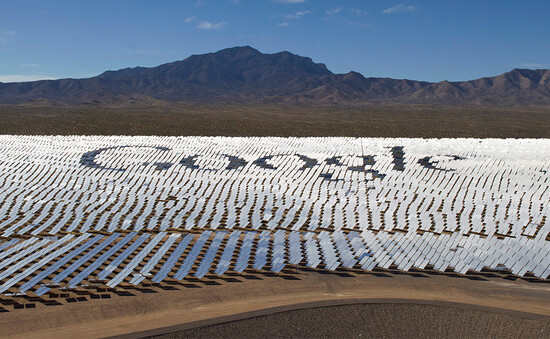

3.
For artists and artist-activists, there are various ways to respond or relate to such a politics of the sun, which is also a politics of light and heat, of thermodynamics and energy. The Los Angeles-based Center for Land Use Interpretation14 has expanded its archive of “unusual” and “exceptional” sites around the US by adding documentation and photographs (some of it taken from the air using planes or drones) of all major solar plants in the Southwest; these materials are viewable on CLUI’s website and were on display at the organization’s headquarters in spring 2014.15 The entries, which include satellite images and brief profiles of around ninety operating and planned plants, could serve as a starting point for research into the contradictory anthropogenic aesthetics and politics of nature, landscape, land use, and solar power. However, there is no explicit critical or analytical commentary that would guide the website’s users and the exhibition’s visitors. The CLUI simply states that
this year more energy will enter the grid from solar power plants than ever before. Propelled by federal government incentives and California’s legislated decrease in dependence on fossil fuels, construction started on several $1–2 billion power plants in 2011, with most of them coming online in 2014. With so many proposed projects, and so many stalled in the complicated political and regulatory process, it’s hard to know where things are really at. Over a few weeks in February 2014, photographers from the CLUI were dispatched to ground truth the current state of solar.16
Despite its symbolism of brightness and warmth, the political economy of solar is far from transparent or even “green.” CLUI gestures at a somewhat arcane industry hinged between state bureaucracy, equity finance, research and development in photovoltaics, and the engineering struggles to synchronize a plant to the power grid, not to mention environmental issues. Hence, the “current state of solar” seems light years away from the democratization and decentralization so dear to the proponents of liberal-left, anticapitalist energy politics.
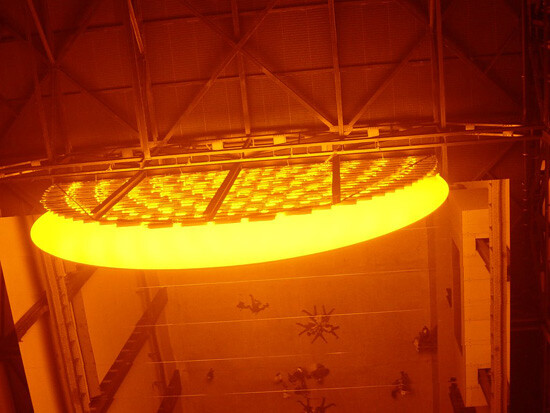

Olafur Eliasson’s The Weather Project (2003), which at first glance seems like an utterly uncritical celebration of solar power, may deserve reassessment after having been the target of much criticism. Eliasson was accused of abandoning every standard of serious criticality and reducing the function of art to a spectacular contemplative special effect. The iconic installation in Tate Modern’s Turbine Hall gained a reputation for being both one of the most popular, and one of the most most fiercely disliked, works of art of the past decade. The installation drew two million visitors and engendered enormous praise, but critics such as Hal Foster and James Meyer dismissed The Weather Project as depoliticizing and anti-discursive kitsch, delivering “a mass audience that cannot fail to be overwhelmed by the magnitude of the installation itself.”17
The Weather Project, like other light-based and heliophilic works by Eliasson, captures the viewer with physical force and atmospheric beauty, transforming Turbine Hall into a temple of immersive sun worship. Backed by the sponsorship of Unilever—the global corporation implicated in crimes that range from deforestation and the extinction of the orangutan population in Borneo to human rights abuses in India, and whose oldest and most famous brand, produced since the 1880s, is Sunlight Soap (for decades manufactured by workers housed in the faux-philanthropic, Arts-and-Crafts model village Port Sunlight, located in Merseyside in North West England), the installation’s artificial sun acts on the sensorium of the audience, arguably turning them into non-cognizant, passive-passionate puppets of the artist, temporarily relieved of the responsibility to think critically.
Understood this way, Eliasson’s work betrays the ethico-epistemological function assigned to the sun by Plato in his famous analogy from The Republic, where he likens the relationship between goodness and knowledge to the relationship between the sun and sight. However, The Weather Project, as well as Eliasson’s practice as a whole, hardly resemble this dismissive picture of an anti-modernist contemporary sublime or an elevated version of amusement park entertainment.
As is well known, Eliasson illuminated the vast Turbine Hall with a light that seemed to emanate from a sun that had miraculously found its way into the museum, hovering at one end of the hall, high above visitors, who sat or laid down on the floor, immersed in the splendor of an otherworldly radiance. Eliasson, however, intended his sun to be perceived not as a spectacular remodeling of an already spectacular space, but as a carefully designed special effect made of “monofrequency lights, projection foil, haze machines, mirror foil, aluminum, and scaffolding,” according to the official description of the materials and media deployed by the artist. This description continues:
A fine mist permeates the space, as if creeping in from the environment outside. Throughout the day, the mist accumulates into faint, cloud-like formations, before dissipating across the space. A glance overhead, to see where the mist might escape, reveals that the ceiling of the Turbine Hall has disappeared, replaced by a reflection of the space below. At the far end of the hall is a giant semi-circular form made up of hundreds of mono-frequency lamps. The arc repeated in the mirror overhead produces a sphere of dazzling radiance linking the real space with the reflection. Generally used in street lighting, mono-frequency lamps emit light at such a narrow frequency that colors other than yellow and black are invisible, thus transforming the visual field around the sun into a vast duotone landscape.
It is thus made very clear that the grand sensation of a sunset displaced into the interior of the former power plant is based on sophisticated trickery, artistry, and technique. Visible to anyone who cared to notice, the luminous mystique conveyed itself as manufactured to the extent that being overwhelmed by the atmosphere did not exclude reflection on the conditions of its very production. Indeed, one could argue that The Weather Project “was meant to unmask the artificial aesthetic environment as a constructed experience.”18 As Eliasson himself emphasized, “The benefit in disclosing the means with which I am working is that it enables the viewers to understand the experience itself as a construction and so, to a higher extent, allow them to question and evaluate the impact this experience has on them.”19
In an overly subversive fashion, Eliasson engaged with the museum as institutional fact. For instance, he invited spectators to look at The Weather Project’s “sun” from behind, revealing the scaffolding of the lamps and the electrical wiring, giving away the secret of the origins of the fine mist. Seriously—or at least ostentatiously—interested in the cultural and scientific production of “the weather,” Eliasson went to great lengths to couple the immersive with the discursive, the construction of the event with its deconstruction. Information on weather issues was displayed on posters around London; he had Tate staff members interviewed about their ideas on weather; and in the museum gift shop, a catalogue was on sale featuring results of the survey and essays by the likes of Bruno Latour. As art historian Anne M. Wagner has suggested, with Eliasson’s projects, “it is only in retrospect, when weighing that experience as not only visual but also allegorical, that its critical ironies—and political purposes—come into view.”20
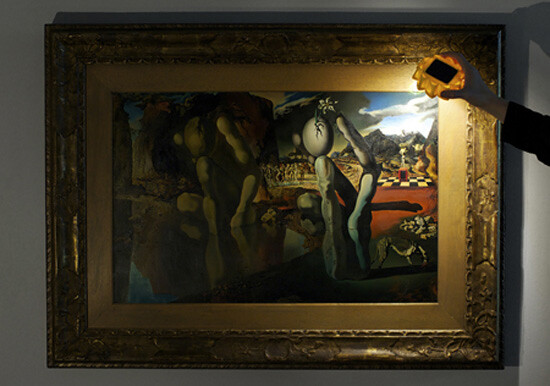

Today, a retrospective view of The Weather Project is informed not only by Eliasson’s subsequent large-scale projects, such as New York City Waterfalls (2008), but also, and arguably more interestingly, by Eliasson’s Little Sun project, which he started with engineer Frederik Ottesen in 2012. With a nod to Joseph Beuys’s more humorous Capri-Batterie from 1985 (consisting of a lightbulb plugged into a lemon), the solar-powered Little Sun lamp is cutely designed to resemble a sunflower. Sold for little money, the lamp is intended “to improve access to electricity and light in off-grid regions.”21 In the summer of 2012, Little Sun was launched at Tate Modern. There was an info space on the third floor of the museum, and on Saturday nights after ordinary museum hours, the lights were turned off and visitors were invited to view the Surrealist collection using only the light of Little Sun lamps—a reference to Man Ray’s nocturnes at the 1938 International Surrealist Exhibition at the Galérie des Beaux-Arts, Paris, where attendees were handed torches to study the exhibited works. Even though Little Sun is presented at art institutions and gains significant visibility thanks to Olafur Eliasson’s status as an art-world celebrity (he is a gifted speaker on TED stages and at fundraising events), it is not exactly an art project. Publicized and marketed with the professionalism of a carefully conceived and well-designed “social business,” Little Sun aspires to contribute to the achievement of the United Nations Millennium Development Goals concerning poverty eradication, education, gender equality, health, and environmental sustainability. The lamp provides light for small businesses in off-grid areas, and, since it is made of inexpensive parts, it is cost-efficient, particularly compared to kerosene. While the indoor use of kerosene lanterns and candles can cause breathing problems or accidental fires, Little Sun is safe, clean, and ten times brighter. As of October 1, 2014, Little Sun claims to have sold 210,000 lamps worldwide, 93,000 of which went to areas without electricity, thereby changing “the fabric of off-grid communities” in nine African countries (Zimbabwe, Uganda, Ghana, Kenya, Burundi, Senegal, Ethiopia, Nigeria, and South Africa), where 200 African entrepreneurs have joined the project.22
The story becomes more complex the more one reads about Little Sun’s global activities (for example, some have criticized Eliasson and Ottesen for manufacturing the lamps in China), but the project is nonetheless an interesting example of not only the increasing crossover between the art world and social business, but also of the ways art can “finally achieve its social function and make visible the relationship with [the] time with which it is engaged,” as Eliasson wrote in the catalogue for The Weather Project.23 Put into a dialogic, resonating relation, The Weather Project and Little Sun provide the means to think the place of contemporary art in a global environment where the aesthetics and metaphorologies of the sun constantly meet its political economy and social reality. (As Jacques Derrida has amply demonstrated, the sun used as a metaphor is “the sensible signifier of what is sensible, the sensible model of the sensible [the Form, paradigm, or parable of the sensible]”24). By connecting the art-based titillation of a metropolitan desire for sunlight with the needs of people that lack reliable light to pursue basic activities, Eliasson puts both dimensions into contact, the one (aesthetic) experience suddenly becoming unthinkable without the other (not necessarily aesthetic).
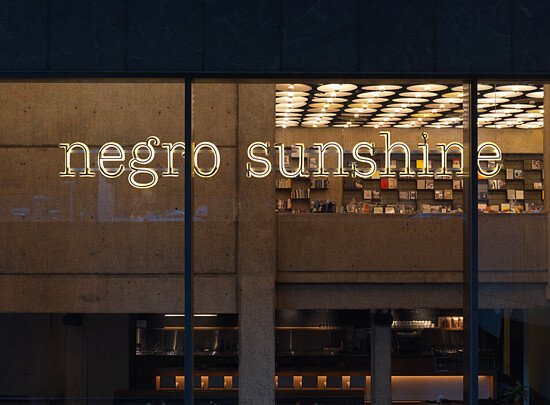

4.
Explicitly in Eliasson’s work, and implicitly in the work of minimal and postminimal artists such as Adolf Luther, Dan Flavin, the ZERO group, and James Turrell, light is negotiated as an immaterial asset providing aesthetic information, social distinction, and psychological as well as physical well-being. Not coincidentally, the cover of the 2007 book Rise and Shine: Sunlight, Technology and Health by Simon Carter features a photo of The Weather Project, acknowledging Eliasson’s contribution to a larger culture discourse on issues related to light and sunshine. Another artist working with electric light, albeit from a rather different angle than Eliasson, is Glenn Ligon. With his neon writing installations Untitled (Negro Sunshine) (2005) and Warm Broad Glow II (2011), Ligon makes effective, though highly interpretable, use of a phrase repeatedly applied by Gertrude Stein, in her novella Melanctha (a part of Three Lives), to characters that “are on both ends of a spectrum of acceptable blackness as defined by prejudicial norms” (William Simmons).25 The despicable racism of Stein’s formulation “Negro sunshine” is both attacked and made visually available in an unexpected fashion by Ligon’s take on light itself. As art historian William Simmons has succinctly written, “The bright neon mimics natural light in color, but its extreme voltage gives it a distinctly artificial feel that ultimately belies the subject matter. It is at once like sunshine and beyond sunshine in its glowing presence.”26
Once again, the metaphors of sun and sunshine prove to be critically ambiguous and strongly determined by their “environment” (Ferdinand de Saussure).27 Ligon’s “(en)lightning” of the racist trope opens it up to a discourse on the valorizing functions of light, unsettling the difference between natural and artificial light while underscoring the interplay of luminous phenomena and linguistic as well as political economies.
In Jonathan Swift’s hilarious Directions to Servants (1745), a pseudo-handbook of manners, the author shows a strangely keen, yet—considering our contemporary low-intensity sunlight wars—uncannily comprehensible interest in the economic, i.e., in the ultimately unequal distribution of light in the master’s household. The text exhorts the servant to handle the candles with particular care, making sure “to avoid burning daylight and to save your master’s candles, never bring them up until half an hour after it be dark, although they be called for ever so often.”28
Furthermore, Swift advises the butler to be both smart and humble with regard to the precious light resources:
When you prepare your candles wrap them up in a piece of brown paper, and so stick them in the socket; let the paper come halfway up the candle, which looks handsome if anybody should come in. Do all in the dark (as clean glasses, etc.) to save your master’s candles.29
The instruction to “do all in the dark” is one of the core directives of any feudal (and colonialist) regime, as it codifies unequal access to basic resources of survival. The economization of light according to class (and, by implication, race) that Swift points to remains a pressing issue, especially when it comes to housing and work.
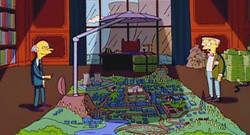

In an episode of The Simpsons called “Who Shot Mr. Burns,” the nuclear plant tycoon creates a scheme to harness the power of Springfield’s sun.
A legendary two-part episode of The Simpsons (a series that has proved to be about not least the political economy of energy supply and climate change) brusquely demonstrates how power is actually about control over the distribution of sunlight as one of the fundamental commons. In “Who Shot Mr. Burns,” the evil capitalist Mr. Burns constructs a giant, movable disk to block out the sun (reminiscent of the geoengineering fad of Solar Radiation Management, which attempts to “dim” the sun).30 This compels the residents of Springfield to buy electricity from his power plant. As he activates the sun-blocker, Burns gets shot. Is this an act of anticapitalist environmentalist vengeance? (The answer is no: the gun was fired by the infant Maggie Simpson).
The struggle for access to the sun and for proper lighting to ensure health and productivity that lasted throughout premodern and modernist urban planning and architecture, involving fights for labor rights and workplace safety, is recurring in parts of the so-called Global South, if under somewhat different auspices.31 While global corporations such as Philips, Osram, Shell, and Bechtel are busy launching well-meaning initiatives for the improvement of lighting conditions in underdeveloped areas—opening up new markets for their products on the way—there is increasing critical, or perhaps just human, interest in off-the-grid activities. Evidence of such interest can be found in the 2012 documentary Solar Mamas, directed by Mona Eldaief and Jehane Noujaim. In the film, a Bedouin woman from Jordan travels to Barefoot College in India, where illiterate women from around the world are trained to become solar engineers in six months. This interest is also manifest in the common practice—especially in megacities—of stealing of power from the electricity grid. But media scholar Sean Cubitt argues that this inherently dangerous method of procuring power, which involves channeling live electricity “through hand-made switches and ring mains with little or no insulation or even protection from the weather,” is “the result of the colonial legacy of power supply.” The “real alternative,” Cubitt suggests, for both slum-dwellers and people living in rural areas is the “local production of power” and “distributed electricity generation” as a “potent symbol for the exit from capital.”32 This, of course, rings familiar, as it harks back to the off-the-grid discourse of the 1970s solar grassroots movement.
However, the transformation of chronobiological rhythms and diurnal cycles that is taking place in the solarized capitalism of sleep deprivation and climate engineering has already priced-in peoples’ desire to get off the grid. The struggle for autonomy and self-sustenance as a laboring person excluded from labor and energy supplies, whether in the Wallonia of the Dardenne brothers or in the slums of the Global South, may turn out to be a training ground for the acquisition of the skills necessary to perform in perfect biopolitical accordance with the logic of value extraction. The less your working hours depend on day/night changes, access to the grid, or the reliability of infrastructural agency, the more you are obliged to exhaustion. A regime that benefits from spatially and temporally flexibilized work and the negative saturation of the subject’s lifetime by the cold glow of LED screens and oppressively modulated absences and abundances of sunlight requires a political practice guided by solar awareness, a politics of light and shine. Or maybe politics is just the very thing to avoid. In the face of the depolarization of the relationships between nature and culture, darkness and daylight, heat and cold, and living and dying, a nondepressive detachment “from the cruel optimism of a political fetish” (Lauren Berlant) seems a perfectly viable option for our solar predicament.33
Jimmy Carter, “Solar Energy Remarks Announcing Administration Proposals,” June 20, 1979 →.
See “This Day In History: June 20, 1979: Solar-Energy system installed at White House,” HistoryChannel.com →.
A “solar economy” certainly of a different order than the one introduced by Georges Bataille and further developed by Reza Negarestani “as the energetic model of dissipation inherent to the Sun.” See Reza Negarestani, “Solar Inferno and the Earthbound Abyss” (2010) →.
The latter term was coined in 1996 by biologist David Schwartzman, who advocated “solarization along with containment of the technosphere” as “material prerequisites for a global civilization realizing the Marxian concept of communism, while optimizing its relations to nature.” See David Schwartzman, “Solar Communism,” Science & Society vol. 60, no. 3 (Fall 1996): 307–331. See also Peter D. Schwartzman and David W. Schwartzman, “A Solar Transition Is Possible,” Institute for Policy Research & Development (March 2011) →; and the Schwartzmans’ Solar Utopia website →.
See Hemauer and Keller’s No. 1 Sun Engine project website →.
Daniel M. Berman and John T. O’Connor, Who Owns the Sun?: People, Politics, and the Struggle for Solar Economy (White River Junction, Vermont: Chelsea Green Publishing Company, 1996), xvii.
Ibid.
Ibid., 239–240.
Hermann Scheer, A Solar Manifesto, 2nd ed. (London: Routledge, 2005): 10.
Garrett Hering, “4 Reasons the Ivanpah Plant Is Not the Future of Solar,” GreenBiz (February 19, 2014) →.
“A non-profit education, art and research organization, founded in 1994, dedicated to the increase and diffusion of information about how the nation’s lands are apportioned, utilized, and perceived.”
See The Center for Land Use Interpretation, “Major Solar Power Plants in the USA” →. The exhibition was titled “Solar Boom: Sun-Powered Electrical Plants in the USA.”
See →.
James Meyer, “No More Scale: The Experience of Size in Contemporary Sculpture,” Artforum (Summer 2004): 223. See also Hal Foster, The Art-Architecture Complex (London: Verso, 2011).
Ole W. Fischer, “Atmospheres: Architectural Spaces between Critical Reading and Immersive Presence,” field: a free journal for architecture vol. 1, no. 1 (2007): 39.
Quoted in “About the installation: understanding the project,” Tate website, 2003 →.
See the Little Sun website →. Eliasson’s inspiration for this project was his first-hand knowledge of the poverty faced by many East Africans. In 2005 he founded, together with his partner Marianne Krogh Jensen, 121 Ethiopia, a small NGO based in Copenhagen, Berlin, and Zurich supporting Ethiopian orphans in their often difficult transition into permanent homes. See →.
See the Little Sun website →. Eliasson’s inspiration for this project was his first-hand knowledge of the poverty faced by many East Africans. In 2005 he founded, together with his partner Marianne Krogh Jensen, 121 Ethiopia, a small NGO based in Copenhagen, Berlin, and Zurich supporting Ethiopian orphans in their often difficult transition into permanent homes. See →.
Information provided at →.
Olafur Eliasson, “Museums Are Radical,” in Olafur Eliasson: The Weather Project, ed. Susan May (London: Tate Publishing, 2003), 138.
Jacques Derrida, “White Mythology: Metaphor in the Text of Philosophy,” New Literary History 6, no. 1 (Autumn, 1974): 5–74, here 52.
William Simmons, “Glenn Ligon and Gertrude Stein: Beyond Words,” The Harvard Undergraduate Journal vol. 6, no. 1 (Spring 2013): 28–32, here 30.
Ibid.
Derrida is quoting Ferdinand de Saussure when he says that it is “impossible to fix even the value of the signifier ‘sun’ without considering its surroundings: in some languages it is not possible to say ‘sit in the sun’” (Derrida, “White Mythology,” 17).
Jonathan Swift, Directions to Servants, foreword by Colm Tóibín (London: Hesperus Press, 2003), 16.
Ibid., 24. The German translation of the last sentence has become the title of a great 1970 film by Swiss director Daniel Schmid (Thut alles im Finstern, eurem Herrn das Licht zu ersparen).
See the instructive chapter “Dimming the Sun” in Naomi Klein’s helpful new book This Changes Everything: Capitalism vs. the Climate (New York: Simon & Schuster, 2014), 256ff.
See, for example, Daniel Freund, American Sunshine: Diseases of Darkness and the Quest for Natural Light (Chicago: Univ. of Chicago Press, 2012); Mohamed Boubekri, Daylighting: Architecture and Health Building Design Strategies (Amsterdam: Elsevier, 2008).
Sean Cubitt, “Electric Light and Electricity,” Theory, Culture & Society vol. 30, no. 7/8 (2013): 309–323, here 319.
Lauren Berlant, Cruel Optimism (Durham, NC: Duke University Press, 2011), 259.
